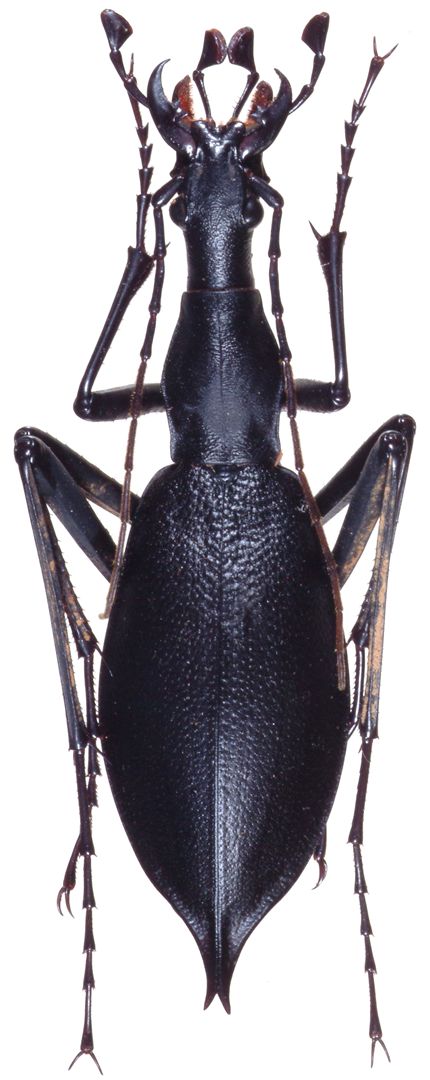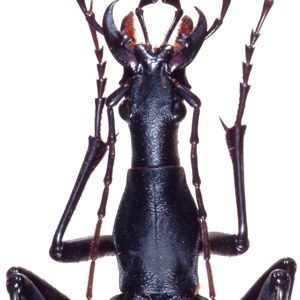| Ecology |
from flatland to mountain (Suga 1981, East Japan Research Group of Carabid Beetles 1989, Yahiro et al. 2001, Carabidological Society of Shiga 2003), bamboo thicket (Kinki Research Group of Carabid Beetles 1979), plantation of Chamaecyparis obtusa (Kinki Research Group of Carabid Beetles 1979), pine forest (Kinki Research Group of Carabid Beetles 1979), Quercus acutissima forest (Kinki Research Group of Carabid Beetles 1979), on Quercus acutissima (Kinki Research Group of Carabid Beetles 1979), forest in riparian bank (Suga 1981), coppice forest around orchard (Suga 1981), coppice forest (Suga 1981, East Japan Research Group of Carabid Beetles 1989, Tanaka 1991a, Matsumoto 2005, Matsumoto 2008), bank (Aono 1987), alpine zone (East Japan Research Group of Carabid Beetles 1989), Pinus densiflora forest (East Japan Research Group of Carabid Beetles 1989), plantation of Chamaecyparis obtusa and Cryptomeria japonica (Tanaka 1991a, 1991b), grassland along mountain trail (Tanaka 1991b), woods (Sunose 1992, Sunose and Kurosawa 1992), forest edge (Sunose 1992, Sunose and Kurosawa 1992, Kato 2000), fallow field (Sunose 1992, Sunose and Kurosawa 1992), Cryptomeria japonica forest (Kinki Research Group of Carabid Beetles 1979, Togashi and Sugie 1994, Hiramatsu 2004), mountain (Sota 1985c), forest adjoinig agroecosystems (Yahiro et al. 1990), broad leaved deciduous forest (Togashi and Hashimoto 1994), snowy wet grassland of the alpine region (Kimoto and Yasuda 1990, Kimoto and Yasuda 1995), Betula ermanii forest (Kimoto and Yasuda 1990, Kimoto and Yasuda 1991, Kimoto and Yasuda 1994, Kimoto and Yasuda 1995), Picea jezoensis and Betula ermanii forest (Kimoto and Yasuda 1991), higher mixed forest (Kimoto and Yasuda 1990, Kimoto and Yasuda 1994, Kimoto and Yasuda 1995), coniferous forest (Kimoto and Yasuda 1994, Kimoto and Yasuda 1995), lower mixed forest (Kimoto and Yasuda 1991, Kimoto and Yasuda 1994, Kimoto and Yasuda 1995), broad-leaved forest in low mountain region (Kimoto and Yasuda 1995), Quercus crispula forest (Kimoto and Yasuda 1995), mixed forest (Kimoto and Yasuda 1995), mixed forest in marshland (Kimoto and Yasuda 1995), riverain grassland (Kimoto and Yasuda 1995), high moor (Kimoto and Yasuda 1995), Alnus japonica forest (Kimoto and Yasuda 1995), marshy forest (Kimoto and Yasuda 1995), fig orchard (Ishitani and Yano 1994), fig orchard (Ishitani 1996), riverbed (Ishii et al. 1996, Yamazaki et al. 1999, Yahiro et al. 2001, Carabidological Society of Shiga 2003), natural forests or near natural forests (Yahiro et al. 2001, Carabidological Society of Shiga 2003), dried secondary forest (Yahiro et al. 2001, Carabidological Society of Shiga 2003), beech forest (Kinki Research Group of Carabid Beetles 1979, Hiramatsu 2004), suburban forest (Fujita et al. 2008), Satoyama forest (Lee and Ishii 2009), grassland (Suzuki and Sakuratani 2010), adult (Sota 1985a, Sota 1985c, Yamazaki et al. 1999), in the cold region, larva (Sota 1985a), from spring to summer (Sota 1985a), summer (Tanaka 1991ab), from May to September (Sota 1985c), snail (Suga 1981, Sota 1985a, Sota 1987b, Yahiro 2005a), land snails (larvae) (Sota 1985c), earthworm (Suga 1981), insect larvae (Suga 1981), fresh carcass of animals (Suga 1981), sap of Quercus acutissima (Suga 1981), carcass of Geothelphusa dehaani (Kinki Research Group of Carabid Beetles 1979 captured at sap of Quercus acutissima (Kinki Research Group of Carabid Beetles 1979), hibernating in slope (East Japan Research Group of Carabid Beetles 1989), hibernating in decayed tree (Suga 1981, East Japan Research Group of Carabid Beetles 1989), hibernating in the gap between roots and soil (Suga 1981), hibernating in the hole made by mole or Chiromantes haematocheir (Suga 1981), hibernating in dead tree (East Japan Research Group of Carabid Beetles 1989) |
 |
| 






